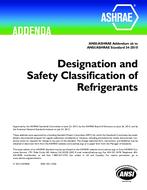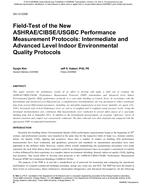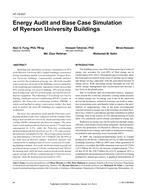Predictions of energy use and indoor climate generally do not agree with results from measurements in buildings during operation. Thesediscrepancies are counter-productive to the implementation of energy-efficiency and sustainability measures. In 2001, several multi-family dwellingswere built at a new residential area in Malmö, Sweden. Well known Swedish architects were involved in designing the buildings, hence they reflectmodern architecture. Prior to the inauguration, the buildings were displayed at the international housing exhibition ‘Bo01’. The housingexhibition had an ecological and sustainability focus. Regarding energy use, all buildings were restricted to use no more than 105 kWh/m² (3330btu/ft²) annually in total. A measurement programme including measurements of district heating, common electricity and household electricity wasset up to monitor the energy use of the buildings. Use of district heating, use of domestic water heating, use of common electricity and use ofhousehold electricity were all studied in detail. The variations in total energy use between the different properties were large. Although all buildingswere designed to meet the same goal concerning energy use, there was a factor of almost three between the lowest and highest use and only oneproperty fulfilled the requirement. This paper presents the measurement results and discusses the results in relation to the different buildings’characteristics as well as in a building process context.
Citation: ASHRAE Conference Papers, Denver, CO
Product Details
- Published:
- 2013
- Number of Pages:
- 8
- File Size:
- 1 file , 540 KB
- Product Code(s):
- D-DE-13-C040


